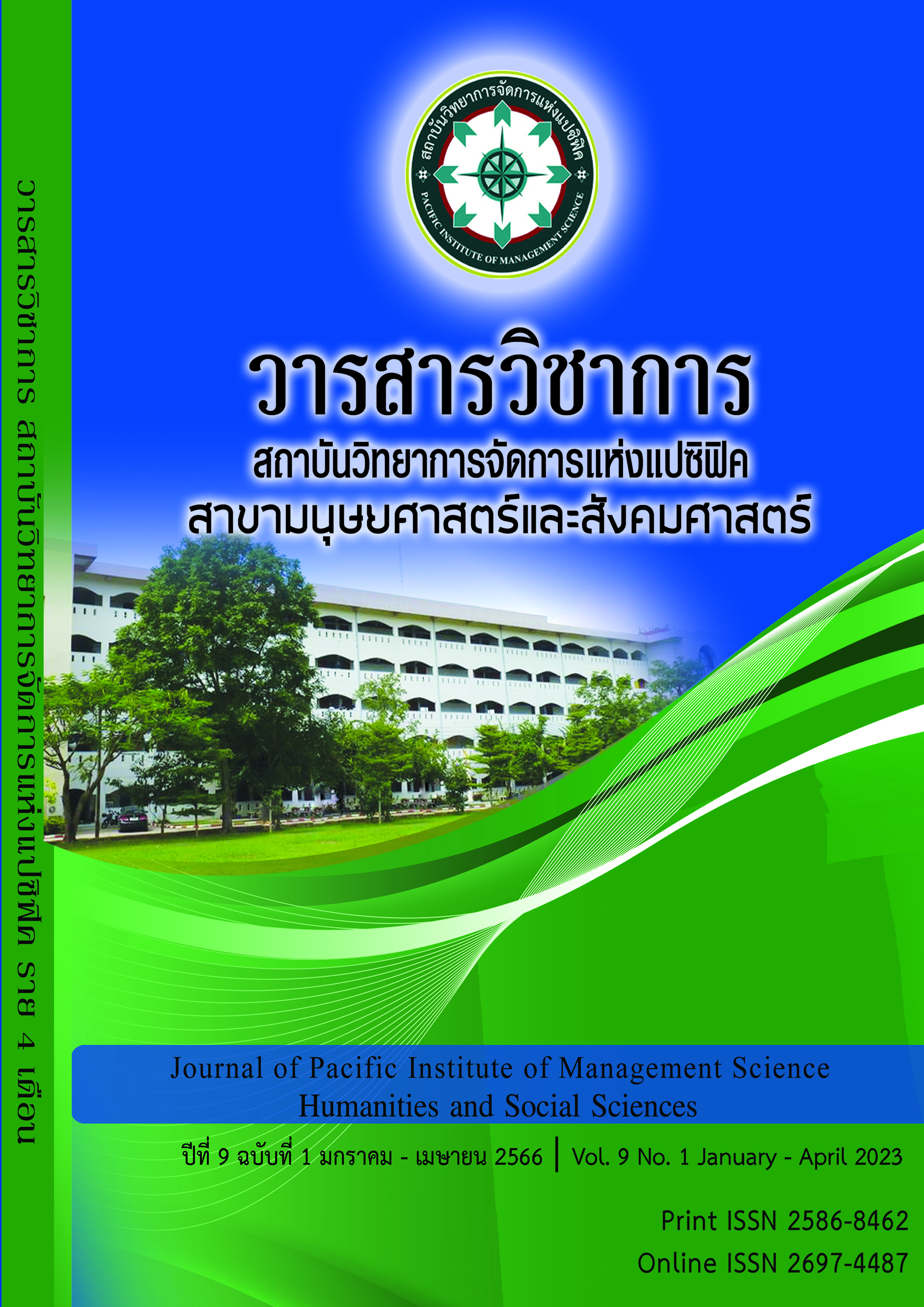Causal Factors Affecting to Competency of Certified Public Accountant (CPA) to Desirable of Entrepreneurs of Companies listed on the Stock Exchange of Thailand
Keywords:
Accounting in formation system, Accounting Professional Ethics, Information Technology, AttitudeAbstract
The objectives of this research were 1) to study the causal factors affecting Certified Public Accountants’ competency (CPAs) according to Entrepreneurs’ desire for listed companies in the Stock Exchange of Thailand (SET) ; 2) to study the influence of causal factors affected on CPAs competency according to Entrepreneurs’ desire for listed companies in SET and 3) to develop a causal model affecting competency of CPAs according to Entrepreneurs’ desire for listed companies in SET. This research is applied both qualitative and quantitative methods. Data was collected from Entrepreneurs of listed companies in SET. A questionnaire was used and purposive sampling was selected from 320 samples. The statistics used for data analysis were frequency distribution, mean, percentage, standard deviation and Structural Equation Modeling. The results showed that the model is conformity with the empirical data (X2/df = 2.36, CFI = 0.99, GFI = 0.61, AGFI =1.24, RMSEA =0.042 and SRMR=0.02) indicated that the structural equation model is harmonious with the empirical data. Hypothesis testing results revealed that accounting information system, accounting professional ethics, information technology and practical attitude were the causal factors that had a positive direct influence on CPAs' competency and Entrepreneurs’ desire for listed companies in SET. In addition, it found that competency of CPAs had a positive direct influence on Entrepreneurs’ desire for listed companies in SET.
References
ฐิติกาญจน์ ศรีพอ และคณะ (2557). ความสัมพันธ์ระหว่างจรรยาบรรณปฏิบัติงานทางการบัญชีกับความสำเร็จในการปฏิบัติงานของนักบัญชีธุรกิจรับเหมาก่อสร้างในประเทศไทย. (วิทยานิพนธ์บัญชีมหาบัณฑิต, มหาวิทยาลัยมหาสารคาม)
ธราพร บุตรสาร ( 2561). ผลกระทบของบรรยากาศในการทำงานเชิงสร้างสรรค์ที่มีผลต่อผลการปฏิบัติงานของผู้ทำบัญชีในเขตภาคตะวันออกเฉียงเหนือของประเทศไทย. วิทยานิพนธ์มหาบัณฑิต หลักสูตรบัญชีมหาบัณฑิต คณะการบัญชีและการจัดการ มหาวิทยาลัยมหาสารคาม
นงลักษณ์ วิรัชชัย. (2542). การวิเคราะห์อภิมาน.กรุงเทพฯ : คณะครุศาสตร์ จุฬาลงกรณ์มหาวิทยาลัย.
เพ็ญธิดา พงษ์ธานี. (2560). ผลของความรู้ ทักษะ คุณค่า จรรยาบรรณ และทัศนคติในวิชาชีพที่มีต่อสมรรถนะของผู้สอบบัญซีภาษีอากร. วารสารสุทธิปริทัศน์, ปีที่ 28 ฉบับที่ 87: 95-121.
วิชิต อู่อ้น (2553).การวิเคราะห์และการสืบค้นข้อมูลทางธุรกิจ. (พิมพ์ ครั้งที่1) กรุงเทพฯ :มหาวิทยาลัยศรีปทุม
สภาวิชาชีพบัญชีในพระบรมราชูปถัมภ์(2553) มาตรฐานการบัญชีและมาตรฐานการรายงานทาง การเงิน (ปรับปรุง 2552). ประกาศสภาวิชาชีพบัญชี ปี 2553. ฉบับที่17/2553.
สภาวิชาชีพบัญชี ในพระบรมราชูปถัมภ์. (2564). Soft Skill ทักษะที่นักบัญชีในโลกอนาคตต้องมี. Newsletter จดหมายข่าวสารวิชาชีพนักบัญชี ในพระบรมราชูปถัมภ์, 9(98), 14-16.
อนงค์วรรณ อุประดิษฐ์. (2561). ความสัมพันธ์ของจรรยาบรรณวิชาชีพบัญชีที่มีต่อผลการปฏิบัติงานของผู้ทำบัญชีในจังหวัดลำปาง. จากhttp://www.arts.kmutnb.ac.th/file_article/1541737913.pdf
Beyer, B. K. (1997). Improving student thinking: A comprehensive approach. Needham Heights: Allyn and Bacon.
Charles (2012) Strategic Management: Concept and Applications. New York: MacGraw – Hill.
Diamantopoulos, A., & Siguaw, A.D. (2000). Introducing LISREL: A guide for the uninitiated. Sage Publications, London
Dutu, C., & Halmajan, H. (2011). The effect of organizational readiness on CRM and business performance. International Journal of Computers, 1(5), pp. 106-114. Information Systems, 12, pp. 37-57.
Elton Mayo (1997). The Human Problems on Industrial Civilization. New York: Macmillan,
Gibson, et.al., (1998) Organizational: Behavior, structure, Process’s 3 rd ed. Dallas; Texas: Business Publications, Inc.
Gibson, J. L. (2000). Organizations Behavior (7th ed.). Boston: Irwin.
Hair et al, (1998). Multivariate Data Analysis. (5th ed.). New Jersey: Prentice-Hall, Inc.
Horngren, C. T., Sundem, G. L., & Elliott, J. A., (2002). Introduction to Financial Accounting. 8th ed. Prentice Hall
Ismail, N.A. and King, M. (2007). Firm performance and AIS alignment in Malaysian SMEs’. International Journal of Accounting Information Systems, vol. 6, no. 4, pp. 241-259.
Kelley, Marghiem & Pattison (1997). A Survey of the Effects of Time Pressures on Auditors. [Online]. (n.d.). Available from: http://www.sbaer.uca.edu/ research/1997
Laudon, K. C., & Laudon, J. P. (2012). anagement Information Systems: Wrganization and Technology. Prentice-Hall.
Loiacono et al. (2006) WebQuery: A measure of website quality. American Marketing Association.13:432-438
David McClelland. (2004). A guide to job competency assessment, quoted in David D. Dubois and other, Competency-Based Human Resource Management. The United State of America: Davies-Black Publishing, a division of CPP, Inc, 17.
Nelson, R. R., Todd, P. A. and Wixom, B. H. (2015), Antecedents of Information and System Quality: An Empirical Examination within the Context of Data Warehousing. Journal of Management Information Systems, 21(4), 199-235.
Parry, Scott B. (1998). The Quest for Competencies. Journal of Training, pp. 48-56.
Post, G.V. & Anderson, J.C. (2006). Structural equation modeling in practice: A review and
recommended two-step approach. Psychological Bulletin, 103(3), 411-423
Reckers, P.M., Wheeler, S.W., and Wing, B., A Comparative Examination of Auditor Premature Sign-offs Using the Direct and the Randomized Response Methods., Auditing: A Journal of Practice & Theory 16 (1997): 69-78.
Richard L. Daft (1996) Organization Theory and Design (4th ed). Singapore: West Publishing
Rojas, R. R. (2000). Nonprofit management and leadership. New York: Wiley Periodicals.
Romney,Marshallb. & Steinbart, Paul John. (2009). Accounting Information Systems. New Jersey : Pearson Education.
Schaltegger, S. & Burritt, R. L. (2010). Sustainability accounting for companies: Catchphrase or decision support for business leaders?. Journal of World Business, 45, 375-384
Schermerhorn, J. R. (2000). Management (7th ed). New York: John Wiley & Sons.
Schumacher, R.E., and Lomax, R.G. (1996). A Beginner’s Guide to Structural Equation Modeling. New Jersey: Lawrence Erlbaum Associates.
The International ICT Literacy Panel (2007). Digital Transformation A Framework for ICT Literacy, U.S.A. : Educational Testing Service.
Downloads
Published
Issue
Section
License
Copyright (c) 2023 Pacific Institute of Management Science

This work is licensed under a Creative Commons Attribution-NonCommercial-NoDerivatives 4.0 International License.
บทความที่ได้รับการตีพิมพ์เป็นลิขสิทธิ์ของ สถาบันวิทยาการจัดการแห่งแปซิฟิค
ข้อความที่ปรากฏในบทความแต่ละเรื่องในวารสารวิชาการเล่มนี้เป็นความคิดเห็นส่วนตัวของผู้เขียนแต่ละท่านไม่เกี่ยวข้องกับสถาบันวิทยาการจัดการแห่งแปซิฟิค และคณาจารย์ท่านอื่นๆในสถาบันฯ แต่อย่างใด ความรับผิดชอบองค์ประกอบทั้งหมดของบทความแต่ละเรื่องเป็นของผู้เขียนแต่ละท่าน หากมีความผิดพลาดใดๆ ผู้เขียนแต่ละท่านจะรับผิดชอบบทความของตนเองแต่ผู้เดียว







